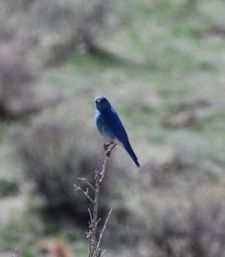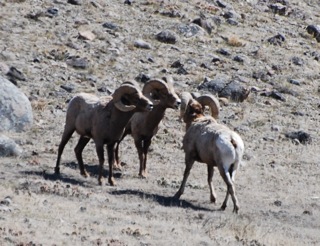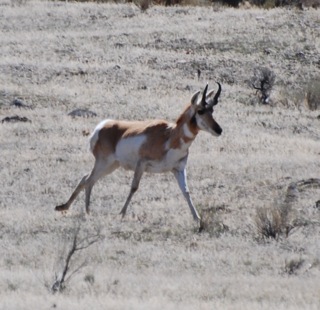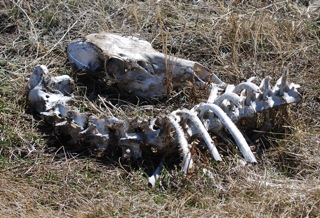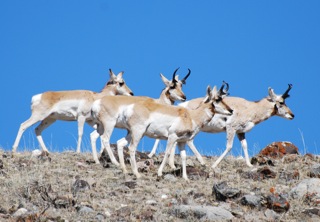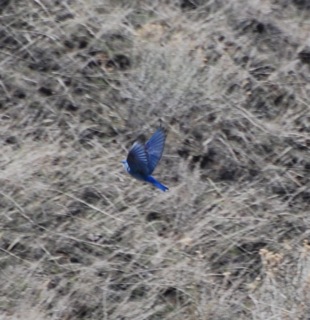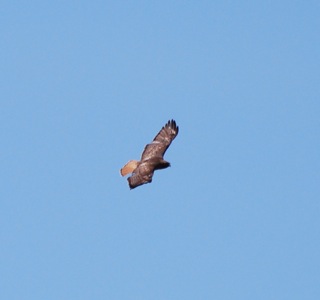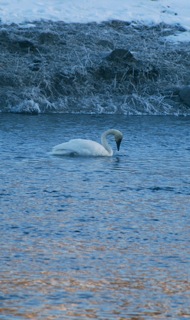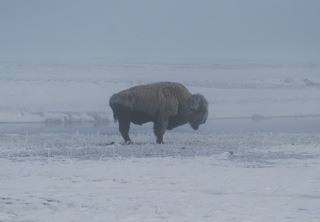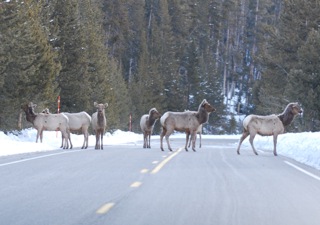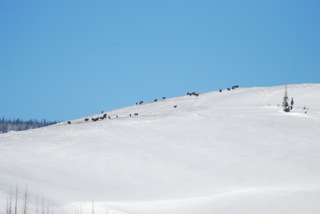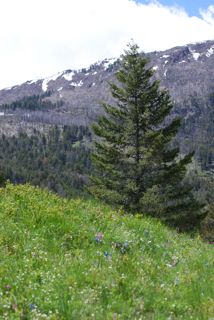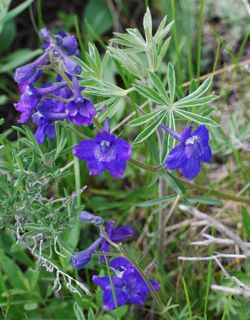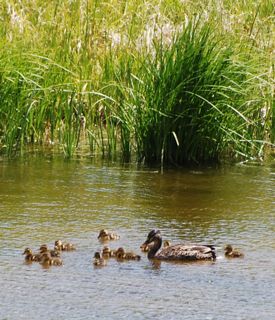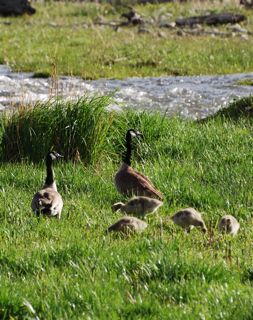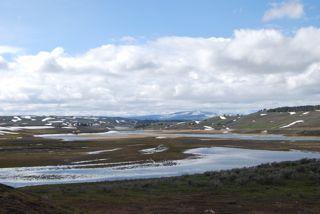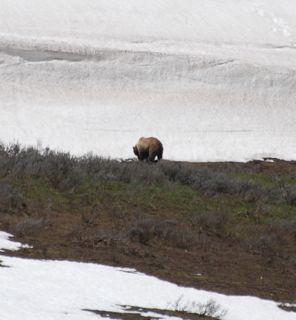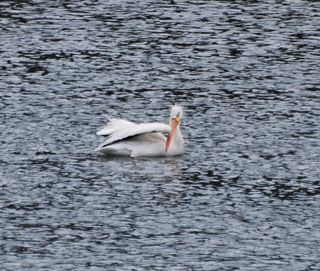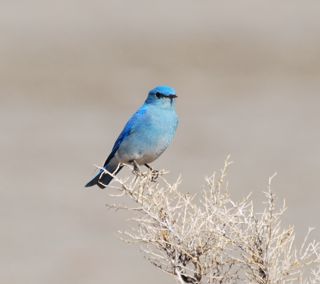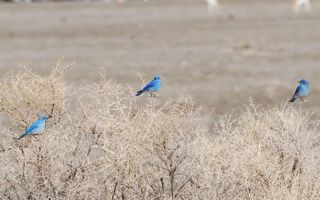 What do mountain goats, bighorn sheep, grizzly bears, bison and bison calves, pronghorn antelope, coyotes, sandhill cranes, red-tailed hawks, wolves and wolf pups, elk and mule deer all have in common? We observed all of these animals today in Yellowstone.
What do mountain goats, bighorn sheep, grizzly bears, bison and bison calves, pronghorn antelope, coyotes, sandhill cranes, red-tailed hawks, wolves and wolf pups, elk and mule deer all have in common? We observed all of these animals today in Yellowstone.
For my family’s visit to Yellowstone, I scheduled a custom wildlife tour of the northern part of the park through the wonderful non-profit the Yellowstone Association. Barbara and Ariana, our excellent and fun guides, greeted us at 6:00 am this morning with coffee and hot cocoa, and we boarded our own bus to head to Lamar Valley. Some highlights of our trip:
 6:15 am: Grizzly bear traffic jam just fifteen minutes into our trip as we passed over the bridge spanning the Yellowstone river. We observed from the relative safety of our bus as the bear rambled along the road.
6:15 am: Grizzly bear traffic jam just fifteen minutes into our trip as we passed over the bridge spanning the Yellowstone river. We observed from the relative safety of our bus as the bear rambled along the road.
6:45 am: It’s never too early for a dose of cuteness. A large herd of bison with about five drowsy baby calves rested in a meadow near Roosevelt.
6:50 am: At Floating Island Lake, our guide shows us a nesting sandhill crane, which on my own I might have taken for a small rock. After a short time the feathered mass stands and through our binoculars we are able to see her eggs. Just for affect a red-tailed hawk soars overhead.
 7:15 am: We arrive in Lamar Valley and quickly find the yellow X-terra of Rick McIntyre, the wolf guru of Yellowstone. Where his SUV is parked is a sure sign of wolf activity. We settle at Slough Creek Campground and focus our spotting scopes on a den site of the Slough Creek pack. We are rewarded with an appearance of a female and a pup—the cuteness quotient of our morning suddenly increases exponentially
7:15 am: We arrive in Lamar Valley and quickly find the yellow X-terra of Rick McIntyre, the wolf guru of Yellowstone. Where his SUV is parked is a sure sign of wolf activity. We settle at Slough Creek Campground and focus our spotting scopes on a den site of the Slough Creek pack. We are rewarded with an appearance of a female and a pup—the cuteness quotient of our morning suddenly increases exponentially
9:00 am-11:00 am: Barbara, our guide, spots a lone collared black wolf sitting by the river, which is later identified as female 526.  Rick, via the radio wolf network, credits the Yellowstone Association with the sighting, which is akin to being thanked by Audubon for a spotting a bird. Suddenly 526 dashes down the bank of the river, meets up with five other wolves, and after chasing a pregnant cow elk in the river, they take her down. After the hunt, one wolf trots off with her unborn fetus—a grisly reminder of the indifference of Mother Nature. While we watch the wolves, a coyote trots among us searching for food.
Rick, via the radio wolf network, credits the Yellowstone Association with the sighting, which is akin to being thanked by Audubon for a spotting a bird. Suddenly 526 dashes down the bank of the river, meets up with five other wolves, and after chasing a pregnant cow elk in the river, they take her down. After the hunt, one wolf trots off with her unborn fetus—a grisly reminder of the indifference of Mother Nature. While we watch the wolves, a coyote trots among us searching for food.
1:00 pm: Barbara scouts the snow-covered ridges of Barronette Peak, searching for mountain goats and within a few minutes has found some scurrying on the perilous cliffs. On an opposite facing ridge, we find four bighorn sheep.
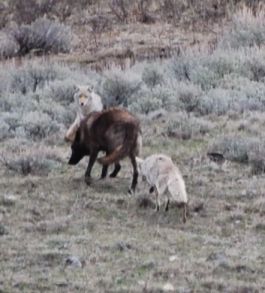 1:30 pm: On our return drive through Lamar Valley, Ariana notices four red-tailed hawks soaring low over a meadow, and a herd of pronghorn dashing down from a ridge. We stop and spot a lone dark wolf and three coyotes giving chase to each other, a truly mesmerizing sight. Although the game could have deadly consequences, the two species appear at play, teasing each other with feints and charges. At one point they call a truce and rest, and one coyote gives a loud howl.
1:30 pm: On our return drive through Lamar Valley, Ariana notices four red-tailed hawks soaring low over a meadow, and a herd of pronghorn dashing down from a ridge. We stop and spot a lone dark wolf and three coyotes giving chase to each other, a truly mesmerizing sight. Although the game could have deadly consequences, the two species appear at play, teasing each other with feints and charges. At one point they call a truce and rest, and one coyote gives a loud howl.
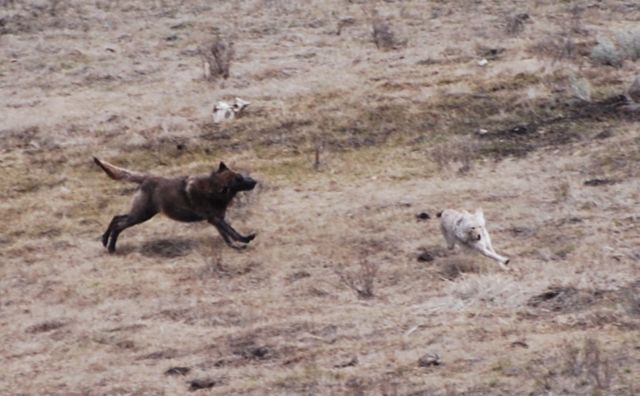
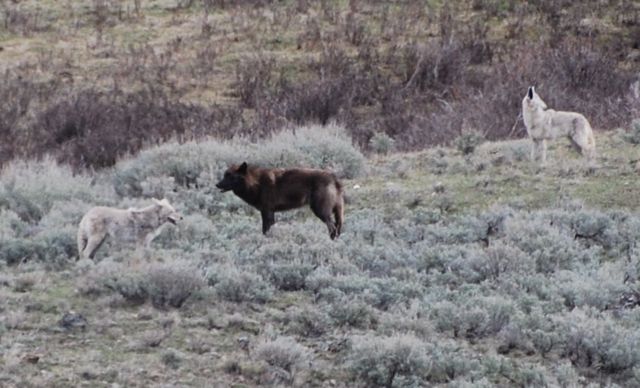
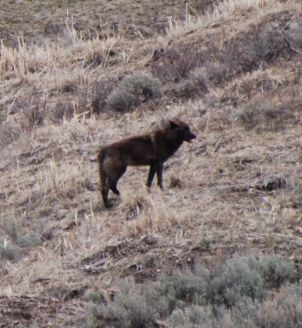
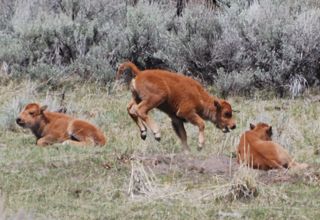 Bison Fun
Bison Fun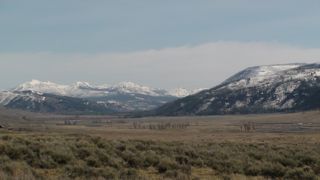 Spring in Lamar Valley
Spring in Lamar Valley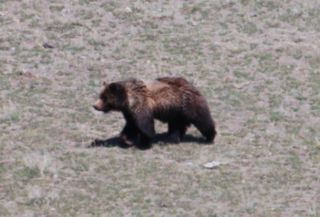 Grizzly Near Slough Creek
Grizzly Near Slough Creek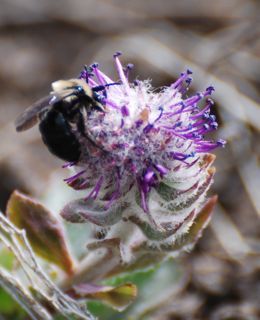 Bee on Wyoming Kitten-Tails
Bee on Wyoming Kitten-Tails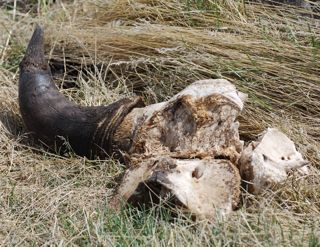 Bison Skull and Horn
Bison Skull and Horn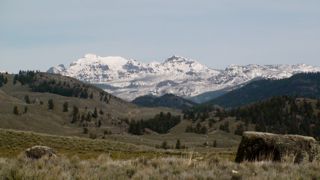 Beartooth Range
Beartooth Range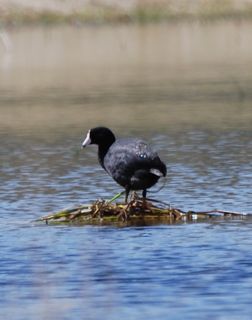 American Coot
American Coot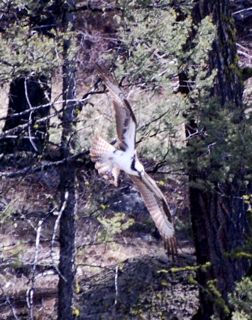 Osprey in Flight
Osprey in Flight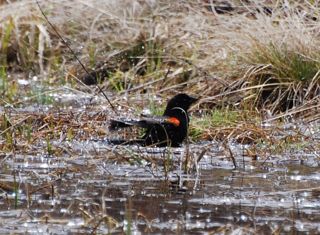 Red-winged Blackbird Bathing
Red-winged Blackbird Bathing



